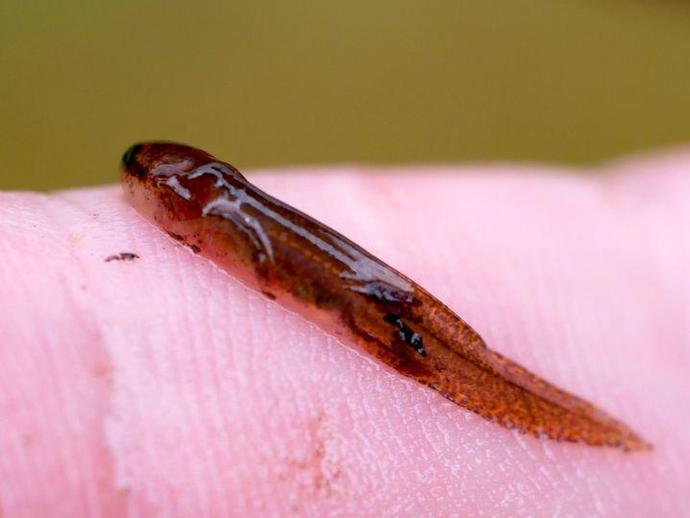November 24, 2021
Ben is taking a well-deserved vacation the rest of this week, so we're reaching into the archives for today's #BenInNature update presented by our friends at Carter Bank & Trust! The following post was originally published on August 31, 2020.
It may not look like much out of the water, but this little fellow is most likely a larval eastern newt (Notophthalmus viridiscens).
The eastern newt has quite an interesting life cycle. As larva, they have gills and don't leave the pond where they hatched. After about three months, they shed their gills, turn bright orange, and develop little red spots rimmed with black; during this juvenile stage, they are known as "red efts" and they take to land, traveling far and wide in search of a new pond. After two to three years, they will find a suitable pond, crawl into the water, and transform a third time! They turn a dull olive color with a yellow belly, grow a blade-like tail for swimming, and often spend the rest of their life in the water (although the adults can escape to land if the pond becomes unsuitable for whatever reason).
Eastern newts can be found throughout much of the eastern and central United States, and they feed on insects, small mollusks, and even frog eggs! If you'd like to see an eastern newt, they're pretty easy to spot while they're in their bright orange red eft stage. Take a stroll into a deciduous forest after a good rain, keep your eyes pointed to the ground, and you're pretty likely to spot one.
Thank you to Jason Gibson of the Virginia Herpetological Society for helping identify this little guy!
ABOUT #BenInNature
Social distancing can be difficult, but it presents a great opportunity to become reacquainted with nature. In this series of posts, Administrator of Science Ben Williams ventures outdoors to record a snapshot of the unique sights that can be found in the natural world. New updates are posted Monday - Friday, with previous posts highlighted on the weekends. This series of posts is made possible thanks to the support of VMNH Corporate Partner Carter Bank & Trust (www.cbtcares.com).
NATURE PHOTO IDENTIFICATIONS
If you discover something in nature that you would like help identifying, be sure to message us right here on Facebook with a picture (please include location and date of picture) and we'll have our experts help you identify it!

 Hours & Admissions
Hours & Admissions Directions
Directions

